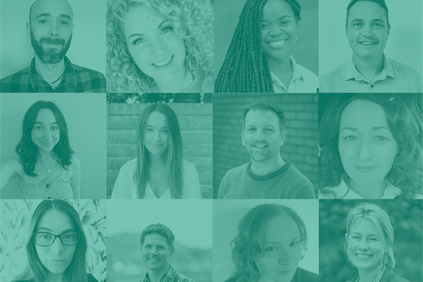When building a digital service, one of the most important principles is ensuring it works for everyone. The Digital Service Standard for Wales places accessibility at the heart of service design. It's essential to create services that are inclusive and usable by all, regardless of individual access needs. It's also written in legislation in the Public Sector Bodies Accessibility Regulations 2018 and the Equality Act 2010.
Stu’s point of view
This blog post is all about my own personal experiences accessing websites as a totally blind individual with a screen reader. Just using a keyboard and my ears. No mouse interaction at all.
The screen reader I use is called Jaws, but other readers are available. NVDA is an option which is free.
Every time I go online, I am looking at websites with my eyes closed!
I navigate my way around the sites by using the arrow keys, tab key and using the letter F key or the letter H key.
Arrow keys allow me to listen to lines, words and letters. The tab key jumps down the page to links. The letter F takes me straight to carousels and edit fields where I need to fill in information in forms or search fields. The letter H takes me to headings. I do not use the mouse.
Please familiarise yourself with screen readers and how they work by downloading either the Jaws 40-minute demo or the full version of NVDA which is free.
There is no point in engaging with this blog otherwise. You must understand screen readers.
Available downloads:
Please do not continue with this blog until you have engaged with the screen readers above. Try them out and have fun learning. Close your eyes whilst you are learning.
Achieving success in the dark
I would like to experience complete accessibility from start to finish on every website I visit. Just like non-disabled people do. What do I mean by complete accessibility? 2 examples follow below:
- Can I visit a website and find the contact details for the service or department I need, in less than 5 minutes?
- Can I find the product or appointment I require and complete the purchase and/or booking process independently?
Barriers in the dark
Example 1 barriers
Phone numbers buried in websites. By this I mean that the numbers are sometimes 3 or more web pages deep or just not in evidence at all. Businesses want to save money by reducing call centre staff and in my opinion are actively discouraging voice to voice contact. The public still need to talk to staff and not an online bot. These bots are not accessible to screen reader users anyway.
Forms that do not work. I have encountered websites where edit fields do not open when you press enter on them. This means that I cannot enter my contact details to press submit. This ultimately means that I cannot engage with the service.
So, when I cannot find the phone number and cannot speak to anyone regarding the fact that I cannot complete information forms, this makes the entire website/company useless to me. It also demonstrates a complete lack of empathy and undermines equality.
What can local authorities do to increase the accessibility of their websites?
One of the most TO THE POINT concepts online I have personally encountered is Born Accessible. I believe that Born Accessible encapsulates the topic of accessibility in a very comprehensive manner and contains a treasure trove of insight.
Now you have learned all about the amazing concept, which is Born Accessible, you may now proceed with the remainder of my blog.
Achieving success in the dark is so much more than online or digital experience.
My desires with this blog are for everyone with influence in the digital arena, to PLEASE CONSIDER THE BIGGER PICTURE. Please think beyond your digital platforms and consider the humans on the other side.
Just because your website “looks good” does not mean that it is accessible.
What does it mean when digital services are not accessible, and what is the real-world impact on screen reader users? Just SOME examples, are outlined below:
Not being able to order flowers for your mum on Mother’s Day.
Not being able to pay your council tax online.
Not being able to plan a journey to work with confidence.
Not being able to order your weekly shop.
Not being able to book a table at a restaurant, secretly, to surprise your wife.
It would be fantastic for all local authorities to increase staff awareness of the challenges that blind and partially sighted individuals face on a daily basis.
For further information on local training opportunities, contact Sight Life.
Michelle.jones@sightlife.wales
07400 110 902
Why increase staff awareness of these issues?
To prevent staff telling people that phone into call centres to access services online. This is immensely frustrating because I am usually phoning in because the website is not accessible LOL! Please break this “merry go round” cycle by ensuring adequate training for all.
Final points
Please do not be one of those blog readers that does not complete the suggested interactions within the blog.
Please contact Sight Life in Cardiff for further information on all things related to blind and partially sighted individuals. Especially invaluable training for your staff.
02920 39 89 00
Please look at websites with your eyes closed.
Please think beyond your digital platforms.
Please do not be “that organisation” that still has not acted on this blog in five to ten years’ time.
Thank you for caring enough to read this blog. Your time and support are appreciated.
#GoSightLife!
